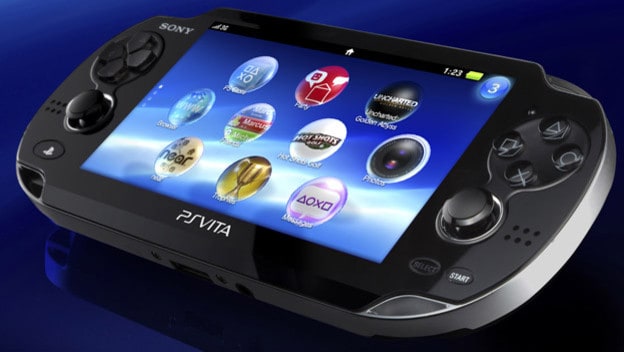Once upon a time, let’s say back in 2012, people were optimistic about the future of Sony handhelds. The PlayStation Portable hadn’t exactly been a best seller, but proved itself to be one of the greatest systems ever for RPGs. Sony had announced and released a successor, called the PlayStation Vita, and it looked gorgeous. It had everything people could want in a portable.
The Vita was a gorgeous system. There was an OLED touch screen. It had dual analog sticks. The thing fit well in your hand. Sure, the rear touchpad was a bit odd, but it wasn’t as though every game was going to rely on that gimmick. With a launch window that included Escape Plan , Gravity Rush , Uncharted: Golden Abyss , Wipeout 2048, Lumines, BlazBlue: Continuum Shift Extend, Rayman Origins, Marvel vs. Capcom 3, and Touch My Katamari , it seemed like a win.
Flash forward to now, and all you see is sadness. The Vita is still a great system with huge potential, but Sony completely mismanaged it. Even the company’s president, Shuhei Yoshida, told Eurogamer that the company has no plans for a new system because the client isn’t healthy. While mobile gaming will surely take some of the blame, since it is really easy for people to pick up their phone rather than start playing over a dedicated device, Sony itself deserves some of the blame for creating the greatest handheld that never was.
After all, Sony has completely dropped the ball when it comes to caring for the Vita. Look at the library of games. Most of the worthwhile titles aren’t first party properties. They’re from third party developers who took a chance on the handheld. Japanese developers in particular took chances on the Vita, and genres like JRPGs, adventure games, and visual novels have flourished on the handheld as a result. Do you know what one of the last Sony-published, big name games for the Vita was? Borderlands 2 back in 2014. The company even said this year, around E3, that it doesn’t intend to make any more AAA games for the handheld.
Which is fine. There are consoles that get by and profit from third party games. But Sony wasn’t even making it easy for these additional titles to do well. The last three E3s, Sony has barely called attention to the Vita. Its presence at the company’s booth has paled in comparison to the PlayStation 3 and PlayStation 4 offerings. At the inaugural PlayStation Experience, there were only a handful of Vita units when someone walked in. It was as though Sony set up a small corner for the platform, then made everything else big and flashy. Who’s going to look at the barren booth when there’s a bright and shiny presentation adjacent to it?

That doesn’t even get into the remote play fiasco. The Vita was marketed as a device that could not only play its own games, but PS3 and PS4 ones as well. The streaming was touted, but then not properly implemented until about a year and a half or two years after its release. It’s only now that we can really successfully enjoy PS3, PS4, and even PlayStation Now games on the handheld.
It’s almost as though Sony wants to behave as though the Vita’s faltering is due to other influences, but not call any attention to the role it may have held in keeping the handheld back. Yes, mobile gaming is growing, but that doesn’t explain why the Nintendo 3DS is still performing well. The Vita’s library has quality titles too, enough that could have made it a contender alongside its contemporary, but there wasn’t the proper marketing to let people know it. Great games from supporters help, but every system needs a few AAA efforts invested in it. And when it comes to performance promises, they need to be kept. The Vita could have been this generation’s greatest handheld, but Sony flubbed it.
